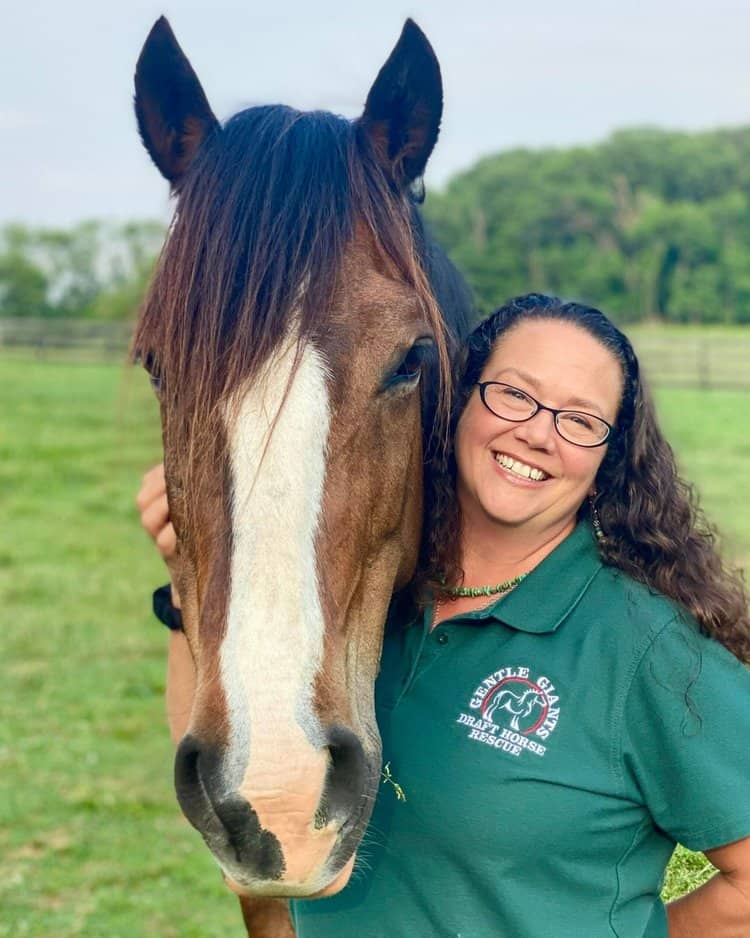Emotions and Entrepreneurs

Emotions and Entrepreneurs
If you are an entrepreneur or someone who is entrepreneurially minded, you know the complicated dance you have with your emotions. I write this as a business owner and human—one full of emotions that influence the decisions and actions I take.
Throughout this article, I am including techniques that I have found useful. I hope you do as well.
Entrepreneurs are a Different Breed
We all like to think of ourselves as rational beings, and we are, when we are calm. But get us excited, angry or confused and clear-headed thinking gets left on the sidelines.
How many of us have regretted things we said or did (or didn’t say or do) because of some emotional experience that caught us like viscous mud, slowing or stopping our better judgement?
As a licensed therapist and coach who has worked with entrepreneurs, business owners and high performers for the last three decades, I have seen incredible ideas get side-lined because of their owner’s emotions.
Male and Females, Entrepreneurs and Emotions
Interestingly (and certainly not always) it is often the male entrepreneurs that struggle with what they say and do and the female entrepreneurs struggle with what they don’t say and do.
I’m actually going to contradict the sentence I just wrote, because men and women tend to react to certain emotions similarly. However, men have a tendency to feel anger in a direct manner and women have a tendency to shunt anger into depression.
Maybe a better way to say this is that heightened emotions like anger tend to create negative actions like hurling insults, prematurely firing someone, canceling an effort. Or destroying inventory or ending a relationship. These are actions that are clearly visible and directly attributed to the anger.
Other emotions such as depression or anxiety tend to create inertia, paralysis, confusion and placating. Sometimes you can see a direct line of reasoning to something difficult and these lack of actions and sometimes it is less obvious.
Like the elite athlete, the entrepreneurial psyche is not the same as non-entrepreneurs. Something that I repeatedly hear from my clients is, “I tried meeting with a therapist, but they just didn’t get me.”
And I would say, “They thought you were too driven, right? Like there was something wrong with you and you needed to ‘tone it down,’ right?”
“Yeah, exactly.”
Therapist or Coach?
This is an ongoing conundrum with mental health and extreme anything—athletes, business owners, entertainers, high performers. These types of people want more than most humans. They want to delve into their own potential. They want to reach their peak performance. At the extreme ends, none of this sounds “healthy” to the average therapist.
This is why so many of these unique people choose coaches. Because they want someone to help them turn their volume up, not down. And yet, they are human, with all the same needs for sleep, relationship, self-esteem, security, and challenge that “regular” people have.
Because entrepreneurs and high performers usually do much more than the average person, the kinds of pressures that they deal with are out of the ordinary. Sometimes a quick minute of mindful breathing can ground you in the middle of that stress.
Here is a quick overview of ‘mindful breathing.’ This is something you can do for just a few minutes and it will regulate your nervous system. For a quick calm, take a couple minutes to recenter. But for longer lasting help, practice this daily for 5-19 minutes.
- Sit or lie in a quiet place.
- Keep your back straight; close your eyes.
- Focus on your natural breath.
- Notice the air entering and leaving your nostrils or the movement of your chest/abdomen.
- If distracted, gently refocus on breathing.

Unique Pressures
As mentioned earlier, entrepreneurs and high performers experience pressures that many people with a normal 9-5 have never even thought of.
For example, here are some of the stress points of some of the individuals I have coached:
- Directly overseeing multiple budgets that exceed high 8-figures.
- Having 500 people who depend on you for their paycheck.
- Having thousands of people report to you.
- Manufacturing or product procurement that spans international rules and regulations and supply chain issues.
- Running out of capital and your product is so close, but it still doesn’t work. Soon, you will have to tell everyone that works for you that you no longer can pay them.
- Trying to raise millions of dollars to keep the initiative live and moving forward.
- Having your marriage really struggle or die while running your company.
- Having your children cut you off while trying to keep all of the balls in the air.
- Revenue going from high $XXM to low $XM over a few months.
Stressors
Entrepreneurs have all the same stressors that ‘regular’ people do, but in addition, they often deal with 100’s more details than their non-high performing counterparts.
Their emotional struggles impact a significantly greater number of people. For any entrepreneur who is even remotely self-aware, this becomes a heavy burden. Knowing that their decisions and actions (or lack of actions) ripple out so much further than just themselves or their immediate family can create intense pressure.
I am not saying that entrepreneurism is bad. As one myself, I love the challenge, the ‘game’—life, to me, is so much more interesting owning a business.
I have spent hundreds of hours being a Trusted Advisor to many entrepreneurs and owners. Hearing their struggles. Helping them navigate that lonely space of being the one where the buck entirely stops with. I do know when you have someone in your corner, it makes the load feel a little lighter and it is easier to see possible solutions.
Self Care
Some other ways to help increase one’s resilience in the face of pressures: self-care. It may sound trite, however, taking time for one’s self allows a break from the pressure and allows your physiology to ‘reset’. If you say, “I’d like to do that, but I simply don’t have the time.”— I’ll leave you with this idea:
You either take time to prevent illness or illness makes you take time. (Mental and physical).
Take time for a walk, a short nap, listen to music, get a massage or do some yoga or go for a run. All of these activities give your brain a moment to unplug and to remind itself that your business or dream is not you. It’s a huge part of you, but it is not your sole identity.
Uncoupling these can help you gain perspective on the pressures you experience.

Emotional Regulation Pro or Con?
I want to bring up the Steve Jobs and Elon Musks of the world. There isn’t a therapist on the planet who would say the way they treat(ed) people at times is/was ok. Here is the sticky wicket: They treat(ed) people so harshly in the name of getting stuff done and they DID/ DO get remarkable things done. Things no one else could do.
I just finished reading Walter Issacson’s biography on Elon Musk. When Elon went into Twitter after purchasing it (now known as “X”) he intentionally set out to dismantle their culture of ‘psychological safety’. He said that it slowed down momentum and made people passive (my words, not his) and that it interfered with people really challenging each other toward greatness. It is reported that Steve Job acted similarly.
What do you think?
Do the ends justify the means?
There is a line somewhere between acting civilized and regulated and the energy that it takes to galvanize people and get them moving. The people who accomplish great things often abuse or trample those beneath them in the name of getting things done.
I look at athletic coaches who goad and scream at their proteges, or the military berating their enlisted.
I simultaneously understand why there may be a need for this and yet fundamentally don’t agree with treating people this way. Like the ends don’t justify the means.
Ok.
Enough of the larger ‘out there’ examples. Let’s bring it closer to home.
Regulating emotions
For the average business owner—what happens when you don’t regulate your emotions?
Your spouse leaves. Now your kids hate you. Your employees quit. Your business may be successful, but you know it would be MORE successful if you could control your emotions.
Yelling, breaking down doors, ghosting people. Leaving the room in a huff and slamming doors, medicating with alcohol. Overdosing on medication to make you calm down or sleep, buying the next big showcase item. These are all ineffective ways I’ve seen entrepreneurs try to manage their stress and deal with their emotions.
I’ve also seen much more subtle versions of emotions calling the shots toward poor management of the individual and the company.
For example, I have seen several CEO / Owners refuse to fire someone that was actively hurting their company because they were family or a close family friend or a (once-upon-a-time) close friend.
Sometimes they know they need to kill a product, but they’ve invested so much time and energy and money into this venture that they feel like to eliminate it is to invalidate all the investment. So they keep throwing resources at it, knowing it’s not right, but feeling helpless to do anything about it.
I have seen highly competent leaders fail to call investors, because they are afraid of their disapproval and they are ashamed to ask for more capital.
Trusted Advisor
As I partner with my clients, I regularly switch hats between Trusted Advisor, Therapist, & Coach. Usually ‘step one’ involves really hearing and witnessing the feelings. When someone feels seen and heard, they are in a much better place to figure out where to go next.
Often, the answer lies just below the feelings. If the emotions can be expressed in a healthy manner, clarity comes and actions become obvious.
One of my tag lines is: I create insight-to-action so that your next steps are inevitable and transformative.
Clarity begets actions.
You almost can’t help but take that next step, because it is so obvious to you now. Something that was once clouded under intense and confusing emotions.
Here are some small bullets toward creating emotinal regulation:
- Recognize and name emotions.
- Practice mindfulness and meditation.
- Identify emotional triggers.
- Develop healthy coping strategies.
- Pause before reacting.
- Practice self-compassion.
- Seek support from others.
- Reflect on emotional experiences.
- Establish healthy boundaries.
- Engage in regular physical activity.

The Crossover Emotions
It is not always issues with the business that create the headaches for entrepreneurs.
Often the stress and involvement within a business creates issues within the entrepreneurs’ primary relationships, with their intimate partnership taking the brunt of the strain. If you Google divorce and business ownership, the general consensus is that owning a business is tough on your marriage. Divorce rates are said to be higher than in the general populous.
I believe the non-entrepreneurial partner gets sick of waiting to be seen, heard, valued. There are so many crises in a business, especially in the beginning stages. Long hours and dozens of legitimate reasons to say, “Hey, I know we said we would do ‘x’ but if I don’t do this now, the whole thing is going to fall apart.”
The Unraveling
After enough of these conversations, the other person quits trying. And the relationship takes a downward spiral that often culminates in resentment, separation and sometimes divorce.
It doesn’t have to be this way—getting proper systems in place and having some accountability to not choose the business over the people you love—it’s more complicated than this, but at a fundamental level those two steps will help preserve and nurture your relationship with your loved ones.
Something that I have observed to be true: when your personal life is struggling, it is very difficult to show up as your best in your business. And, when your business is tanking, it is exceedingly tough to show up well in your relationships. Most people cannot compartmentalize these emotions. They tend to bleed out from one to the other.
Business AND Personal
My clients often bounce between their personal life and their businesses in terms of the things we work on together, because they are inexorably intertwined. You really can’t have one not effect the other.
The single-most useful intervention I have found with entrepreners is the formation of healthy boundaries. Boundaries are easier to talk about than they are to enact. It takes practice. Boundary formation is like a muscle—the more you do it, the better you get at it.
It take considerable skill to gain the clarity around what the boundary needs to be and then how to enact said boundary in a healthy manner that doesn’t harm those around you.
Here is where a therapist or coach (or both!) can really help you. A good book on the subject: Boundaries by Henry Cloud & John Townsend. They come from a religious perspective, but they do a good job of explaining what boundaries are and how to put them in place. Here is a podcast where I talk about managing time & money, also a form of boundary setting.
Entrepreneurs with Emotions Can Succeed
In conclusion, we all have emotions. How successful or unsuccessful you are in business and life really has to do with how well you harness these powerful feelings. Emotions give entrepreneurs thier drive and ambition. And they can also destroy those same ambitions.

If you would like to explore what a Trusted Advisor / Therapist / Coach can do for you or your business, please contact me!
As someone who has been investing in people for over three decades, I am uniquely qualified to engage with your goals.



























